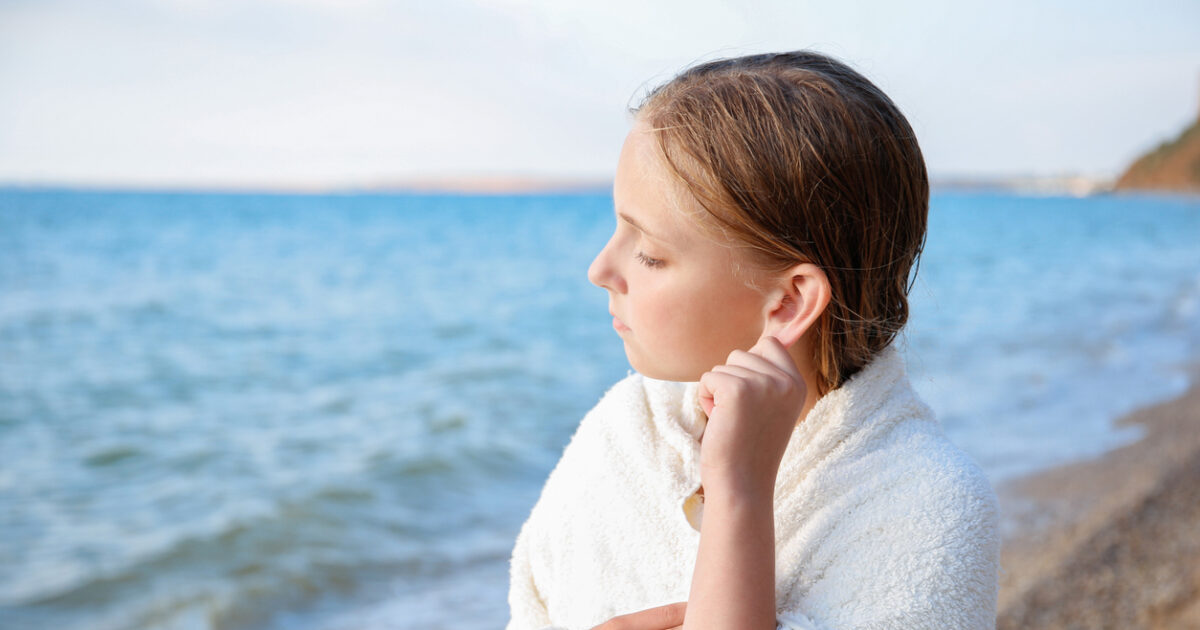The external otitiscommonly known as swimmer’s disease, is a widespread inflammatory condition that affects the outer acoustic canal. It manifests itself as an inflammation of the outer acoustic canal, which connects the ear flap to the tympanic membrane.
“It is usually caused by some bacterial or fungal infection. It often causes severe pain and can occur in both adults and children or babies. Understanding the etiology and appropriate management strategies is vital to effective treatment, but also to prevent this condition, “says Dr. Olga Papadopoulou Otopolis Hospital Director, Metropolitan Hospital, and continues to analyze the causes of her symptoms:
External otitis: causes
The main causal factors of external otitis bacterium or more rarely than funguswhich triggers the development of inflammation. The development of inflammation involves the proliferation or entry of the bacteria or fungi into the skin of the outer acoustic canal through for example a lump. Some predisposing factors increase the risk of external otitis, including prolonged excessive moisture in the ear, trauma and skin diseases (eg dermatitis).
This condition is also characterized as a swimmer’s disease, as extensive sweating or excessive moisture in the ear due to the stay of the water in it after swim in the sea, for example, contribute to the formation of a favorable environment for the proliferation of pathogenic microorganisms. Causing a wound to the ear due to cleaning with cotton swabs or tweezers, finger scratching and the use of earplugs and headphones may contribute to the formation of haunts on the surface of the skin of the outside acoustic canal. These lumps may function as gates to entry pathogenic microorganisms, which trigger the external otitis. Finally, diseases of allergic or skin origin, such as contact allergic dermatitis, psoriasis and atopic dermatitis may facilitate the development of inflammation.
Symptoms of external otitis
In early stages, the clinical picture of outer otitis is usually mild and involves itching in the ear, appearance of redness in the outer acoustic canal, mild intensity annoyance that becomes more severe when pressure is exerted on the ear flap or tragic, which is the small size of the triangular triangular. At the same time, an otorrhea may occur, that is, an outflow of a small amount of clear odorless fluid from the ear. However, the symptoms of the condition evolve quickly if no targeted treatment is applied immediately.
If the disease exhibits deterioration, additional symptoms occur, such as more severe ear pain (otalgia) and otorrhea that may be purulent or serous, while itching and redness is exacerbated. Inflammation contributes to the development of edema and the concentration of liquid in the outer acoustic canal.
At the same time, a sense of fullness of the ear or obstruction of the external auditory canal is manifested, as well as hearing loss (hearing loss). In advanced cases of the disease, the pain is quite severe and may reflect on the face, neck and side of the head on which the ear with outer otitis is located. It also manifests, with complete obstruction of the outer acoustic canal, edema and redness on the outside of the ear, edema in the neck lymph nodes and fever.
Diagnosis
The diagnosis of external otitis is mainly based on clinical evaluation. Taking a detailed history and examination of the ear with otoscope or oomicroscopy are the cornerstone of the diagnosis. Otomicroscopy is the diagnostic test as it reveals an expanded, erythematosus outside auditory canal with or without secretions.
It also applies to the overview of the tympanic membrane in order to evaluate its integrity and to find any drum perforation. Finding any hole in the drum largely determines the application of treatment, as some drugs administered for external otitis may cause damage to the middle ear.
In some cases, where the results of treatment are not desirable, a sample of the fluid that flows from the ear may be needed, so that it can be sent to clarify the pathogenic microorganism that caused external otitis. This procedure contributes to the subsequent administration of appropriate antibiotic therapy.
Treatment for outer otitis
Treatment in cases of external otitis is aimed at fully retreating inflammation in order to heal the skin of the external auditory canal. If the outer acoustic canal occlusion occurs, there is a cleansing of the ear from secretions or wax and then promoting inside the outside acoustic canal of a small gauze or sponge impregnated with antibiotic ointment or special drops. At the same time, the patient is administered to the patient local medicinal preparations in the form of aid drops, which may include substances, such as acidic acid to repair the normal pH of the acoustic canal, cortisone for the decline of inflammation and antibiotic or antifungal drug, depending on whether or not the cause is external.
If external otitis does not recede with local drops or serious or resistant infections are detected, oral antibiotic administration is in order. Analgesic or anti -inflammatory drugs are also administered to relieve pain and inflammation.
“In general, it is recommended to avoid exposure to the water of the affected ears during treatment. Therefore, swimming and water entry into the ear should be avoided during the bathroom, as well as the use of headphones and earplugs. During the bath, the entrance of the outer acoustic canal should be secured by the placement of a piece of cotton swab with petroleum jelly. As outer otitis is likely to cause particularly persistent symptoms, it needs immediate and targeted treatment, ”concludes Dr. Papadopoulou.
